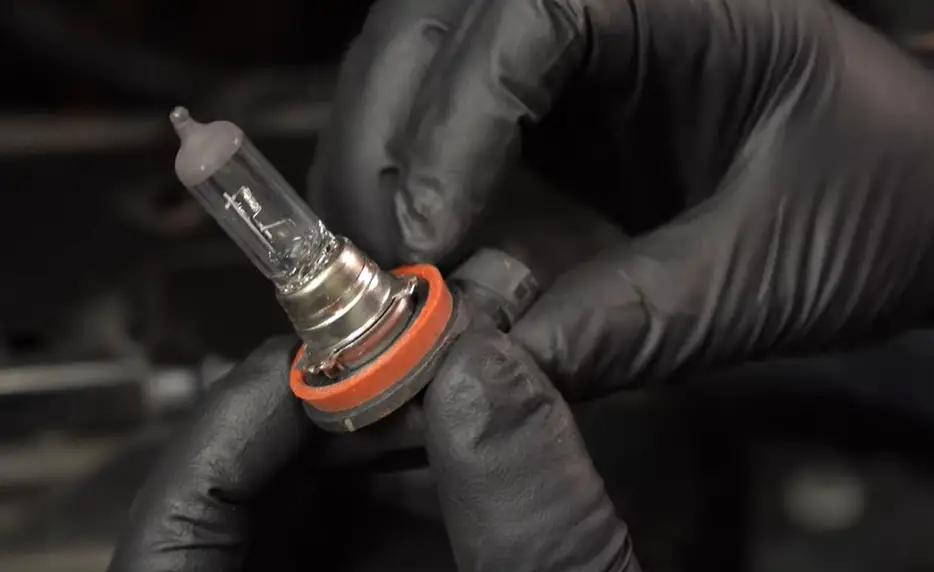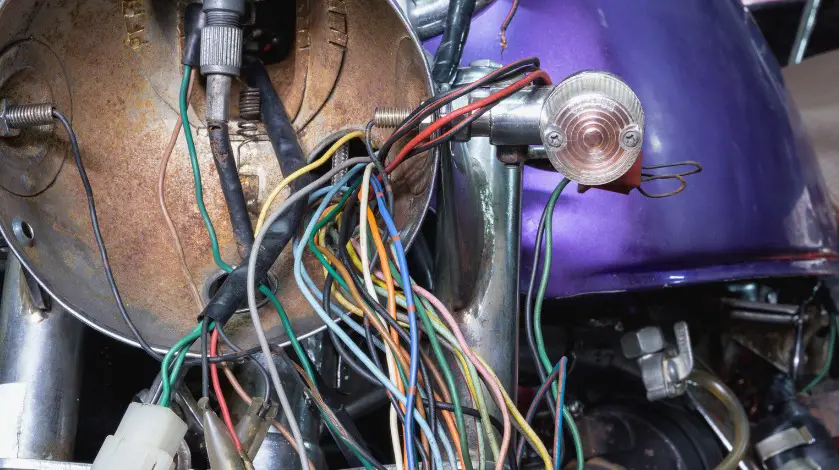Headlights that flicker or go on and off typically indicate a power supply issue or a faulty bulb. Loose connections or wiring problems often cause these interruptions in headlight operation.
A functional headlight is critical for safe driving, especially at night or in poor visibility conditions. Headlights that randomly turn on and off can compromise safety and signal underlying electrical issues in your vehicle. Consistent performance of your vehicle’s lighting system is not just a convenience but a legal requirement in most areas.
The most common reasons for headlights to exhibit this kind of behavior include loose wiring, a dying bulb, a faulty relay, or a problem with the alternator. Regular maintenance checks can often preempt these issues, saving time, ensuring road safety, and preventing more severe damage to your car’s electrical system. Identifying and addressing the root cause swiftly will restore consistent headlight function and guarantee safe travels. Let’s explain “Why Does My Headlight Go On And Off?”

Understanding Vehicle Headlight Functionality
Headlights are vital for both visibility and safety on the road. When they malfunction, it can lead to unpredictable situations, especially at night or during poor weather conditions. Discovering why a headlight flickers or fails is key to ensuring consistent operation.
The Importance Of Proper Headlight Operation
Fully functional headlights are a legal requirement for road safety. They illuminate the path ahead and signal your presence to other drivers. Intermittent headlights can be a hazard, leading to reduced visibility and increased risk of accidents.
Anatomy Of A Vehicle’s Headlight System
Headlight systems consist of various parts. Each plays a critical role in its operation.
- Bulbs: Provide the light.
- Reflectors: Direct the light beam.
- Lenses: Focus the light.
- Housing: Protects internal components.
- Wires: Connect the electrical system.
- Fuses: Protect against electrical surges.
- Switches: Allow driver control over the lights.
Problems with any of these parts can cause a headlight to malfunction.
Regular maintenance can prevent and swiftly resolve these issues.
Common Symptoms And Diagnostics
Experiencing intermittent headlight functionality can lead to challenging driving conditions. This crucial blog segment revolves around understanding the symptoms and steps needed for a swift diagnosis of headlight issues that result in them flickering or turning off unexpectedly.
Identifying Flickering Headlight Issues
Noticing that your car’s headlight isn’t steady is the first step. Symptoms might include:
- Headlights turn off and then on without input.
- Dimming lights when accelerating.
- Random flickering during operation.
It’s essential to pinpoint these issues quickly, as they can impact driving safety.
Tools And Techniques For Diagnosing Headlight Problems
Effective diagnostics require the right tools. Here is a list you might need:
| Tool | Function |
|---|---|
| Multimeter | Checks electrical connections |
| Headlight tester | Tests the light intensity |
| Vehicle’s manual | Provides wiring diagrams |
Begin with a visual inspection of the headlight. Look for signs of damage or wear. Use a multimeter to test the voltage stability of the headlight connectors. Consult the vehicle’s manual for specific electrical troubleshooting steps.
Remember, consistently ensure a safe environment while conducting these tests.
Electrical Issues Leading To Headlight Malfunction
Dealing with headlight issues can be frustrating and hazardous. When your headlight flickers on and off, it’s often due to electrical issues within your vehicle’s lighting system. Recognizing the common culprits is key to a quick and effective fix.
Loose Or Corroded Headlight Wiring

Headlight performance can be compromised when wiring concerns arise. Vibrations and aging wires may loosen electrical connections. Exposed wires might also succumb to corrosion, disrupting the electrical flow.
- Check connections for snugness
- Inspect wires for signs of wear or corrosion
- Consult a professional for wiring repair or replacement
Faulty Headlight Relays And Fuses

Headlights are managed by relays and protected by fuses. A defective relay can cause intermittent operation. Similarly, a blown or weak fuse could result in headlight failure.
- Examine the relay for damage and replace if necessary
- Inspect the fuse box for blown fuses
- Replace fuses and test the lights to ensure consistency
The Role Of The Headlight Switch In Intermittent Operation
The Role of Headlight Switch in Intermittent Operation plays a crucial part in your vehicle’s lighting system. It acts as a command center for turning the headlights on and off. A fully functional headlight switch ensures smooth operation of the headlights. But when it fails, you might experience flickering or complete blackouts while driving.
How A Faulty Switch Can Affect Headlight Function
Several signs point to a faulty headlight switch:
- Headlights turn on and off randomly
- Only one headlight works
- Lights dim unexpectedly
This is often due to worn-out contacts or a short in the switch. The connections inside can corrode over time. When these issues arise, the switch cannot maintain a stable connection. This leads to intermittent headlight operation.
Testing And Replacing The Headlight Switch
To test the switch:
- Locate the headlight switch on your dashboard or steering column.
- Use a multimeter to check for continuity.
- If the multimeter shows no continuity when the switch is on, the switch is likely faulty.
For replacement:
- Disconnect the car battery.
- Remove the switch from its mount.
- Install a new switch in its place.
- Reconnect the battery and test the headlights.
Consult your vehicle’s manual for specific instructions. Use the exact model and make the replacement part.
Bulb-related Problems Causing Headlights To Flicker
Headlights flicker for many reasons. Bulb quality and connection issues rank high. Good bulbs and connections ensure steady light.
The Impact Of Bulb Quality And Fit
Headlights are essential for safe driving at night. The type of bulb in your car impacts how well you see. Better bulbs mean better visibility.
- Poor Quality Bulbs: Cheap bulbs may flicker or die fast.
- Wrong Fit: The wrong size bulb can cause loose connections.
- Power Supply: Bulbs need consistent power to function correctly.
Replacing Worn Or Defective Bulbs

Regular checks keep headlight performance top-notch. Wear and defects in bulbs happen over time.
- Inspect Bulbs: Look for dark spots or dimming.
- Test Connections: Ensure the bulb fits snugly in the socket.
- Replace if Necessary: Use recommended bulb types for your vehicle.
Understanding The Impact Of The Charging System
Car headlights are essential for safe driving. Problems can be confusing and risky. To keep them steady, your car’s charging system must work well. This system includes the battery, wires, and the alternator. It powers your car’s electrical parts. When issues arise, headlights can flicker or go off. Let’s explore how these components make sure your headlights work right.
The Alternator’s Role In Headlight Stability
Alternators keep car electrics running. It turns engine power into electricity. This power charges the battery. It also runs your car’s lights and systems. An alternator issue can cause headlight trouble. Weak or unstable power means flickering lights. Regularly check your alternator to prevent this.
Testing The Vehicle’s Charging System
Always check your charging system. Problems can happen at any time. To test:
- Start your car.
- Use a voltmeter on the battery.
- Readings should be between 13.8 and 14.2 volts.
A reading outside this range shows a problem. Do this regularly for early problem detection. Early fixes will save you money and keep you safe.
The Influence Of External And Environmental Factors
Headlights are crucial for night driving, yet sometimes they flicker or fail. It’s often due to external and environmental factors. Understanding these can help you diagnose and fix the issue quickly. Let’s explore how weather conditions and vibrations can affect your headlight’s performance.
Weather Conditions And Headlight Performance
Weather plays a big role in how well your headlights work. Here’s what you need to know:
- Temperature changes can cause headlight materials to expand and contract. This leads to loose connections.
- Moisture from rain or snow can enter the headlight housing. This can cause bulbs to short out.
- Condensation might build up inside the lens. This dims the headlight’s beam.
Vibration And Impact On Headlight Connections
Your car’s vibration affects headlights too. Tires hitting potholes or rough roads can jostle the headlights. Loose wiring comes from this vibration. Check these factors:
| Car Part | Effect on Headlights |
|---|---|
| Engine vibrations | Can shake loose internal headlight components. |
| Shock absorbers | If worn out, they increase the jolts and impact to headlights. |
| Tires | Bad tires amplify road vibrations, risking headlight connections. |
Advanced Lighting Systems: Hid And Led Considerations
Fluctuating headlights can be perplexing. With advancements in automotive lighting, this issue has taken on new complexities. High-Intensity Discharge (HID) and Light Emitting Diode (LED) systems are now common. Yet, they come with their own set of considerations. This section dives into common issues and the unique aspects of HID and LED lights that might contribute to your headlight’s erratic behavior.
Troubleshooting Issues With Hid Lights
HID lights offer bright illumination, but they can sometimes flicker or turn off unexpectedly. Below are steps to diagnose the problem:
- Check the bulb. It might need replacement.
- Inspect the ballast. Faulty ballasts often cause flickering.
- Examine wiring. Loose connections might disrupt the power supply.
- Assess the voltage. Inadequate voltage impacts HID performance.
Regular maintenance helps identify these issues before they worsen.
Led Technology And Its Voltage Sensitivity
LED headlights are energy-efficient. However, they react sensitively to changes in voltage. These lights might turn off due to:
- Voltage fluctuations in the car’s electrical system.
- Issues with the LED driver, which regulates power.
- Corroded connections, affecting power supply.
Maintaining a stable voltage is key to LED headlight performance. Routine checks can mitigate these concerns.
The Importance Of Proper Grounding In Headlight Circuits
Your car’s headlights play a crucial role in safety. They help you see and be seen. When they flicker or go off, it can be dangerous. A strong ground connection keeps the current flow stable. It helps avoid flickering or loss of light. Let’s dive into how grounding affects your headlight’s performance.
Identifying Grounding Issues
A faulty ground can cause headlight problems. Look for these signs:
- Dim headlights: This means poor ground connection.
- Headlights cut out: This can happen when the ground path breaks.
- Flickering lights: Loose or corroded ground wires cause this.
Check the ground connection. It’s usually near the headlight. Look for a wire that bolts to the car’s frame. This wire should be clean and secure.
Solving Ground Connection Problems

Fixing ground issues can restore your headlights. Try these steps:
- Clean: Remove rust or dirt from the connection.
- Check the wire: Look for wear or damage. Replace if needed.
- Secure the connection: Tighten the ground bolt firmly.
- Add a ground strap: This can improve the connection.
Sometimes, a professional mechanic may need to check your headlight circuit. They can find and fix complex grounding problems.
Professional Versus Diy Repairs: Understanding Your Options
Headlights flickering on and off can be puzzling. This issue affects your vehicle’s safety and functionality. Knowing when to involve professionals or manage repairs yourself is vital. This section helps car owners decide the best course of action.
When To Seek Professional Help
Some headlight problems require a mechanic’s expertise. Complex electrical issues or advanced headlight systems often fall outside the DIY scope. Consider these scenarios where professional help is essential:
- Erratic headlight behavior that persists after bulb replacement.
- Frequent fuse blowouts.
- Visible wiring damage or corrosion.
- Dashboard warning lights indicate electrical system problems.
If these conditions exist, contact a certified technician. They ensure accurate diagnosis and safe, lasting fixes.
Diy Headlight Repair Tips
For simpler issues, a DIY approach might be enough. Here are some tips to guide you:
- Always consult the vehicle manual before starting. It provides specific instructions for your car model.
- Replacing headlight bulbs is often simple. Ensure you have the correct replacement bulbs.
- Check the headlight fuses and relays. Replace if necessary.
- Clean the headlight covers. Oxidation can dim the lights.
These steps can resolve the flickering issue if it’s minor. If the problem persists, revert to professional help.
Preventive Measures And Best Practices For Headlight Maintenance
Headlights are crucial for clear vision during the night. It is essential to maintain them well to ensure safety. Regular maintenance can prevent headlights from turning on and off unexpectedly. Practicing the best preventive measures maintains headlight functionality and ensures driving safety.
Regular check-ups and inspections
Headlight check-ups are a top priority. These simple steps can avoid unexpected issues:
- Check headlights monthly: Look for changes in brightness.
- Inspect headlight covers: Clean them to remove dirt and grime.
- Test headlight alignment: Ensure they shine straight and true.
Long-term solutions to prevent headlight issues
Consider these tips for lasting headlight maintenance:
- Upgrade to higher quality bulbs: They last longer and perform better.
- Apply sealants: They protect against moisture and dirt.
- Install voltage regulation devices: They ensure stable electricity flow.
Following these practices saves time and money on future repairs.
Frequently Asked Questions On Why Does My Headlight Go On And Off
Why Does My Headlight Keep Coming On And Off?
Your headlight may flicker due to a loose connection, a faulty bulb, or an issue with the vehicle’s electrical system. Consistent on-off behavior often signals the need for a professional inspection.
Why Are My Car Lights Turning On And Off By Themselves?
Car lights flickering can signal a dying battery, loose wires, or a malfunctioning alternator. Check these components to diagnose the issue.
Why Does My Headlight Keep Shorting Out?
Your headlight may short out due to moisture, a faulty bulb, electrical issues, or worn wiring. Regularly check for damage or wear to prevent this problem.
Why Are My Car Headlights Fading In And Out?
Car headlights may fade in and out due to a dying battery, loose wiring connections, or a malfunctioning alternator. Regular maintenance can prevent this issue.
Conclusion
Troublesome headlight flickers demand attention for safety and functionality. Routine checks and timely repairs ensure reliability and peace of mind. Embrace vehicle maintenance to keep the road ahead clearly illuminated. Remember, addressing headlight issues early avoids complications and ensures a smoother driving experience.
Stay safe, stay visible.



